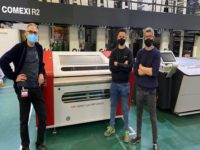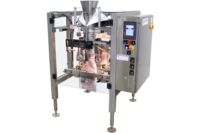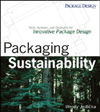Flexo plate technology has fueled a lot of advancements. The introduction of flat top dots, produced in different ways by a number of plate vendors, has helped improve overall quality significantly. They provide much more saturated solids. Meanwhile, HD technology provides much smoother highlights. This, combined with advancements in press, ink, and anilox technologies, has brought flexo printing to a level that would have been unimaginable 10 years ago.
Plate consistency is one of the keys to achieve and maintain optimal print quality. One of the main factors influencing plate stability is the plate’s UV exposure. Unfortunately, traditional multi-step flexo plate making processes can hinder productivity. They can cause errors and rework while reducing press uptime. In the end, that harms the printer’s productivity and profitability.
A new concept was unveiled at Drupa 2016, an exposure unit that combines UV back and main exposure in one unit. Research has shown that a synchronized and optimally controlled UV main and back exposure produces highly consistent digital flexo plates – for every digital flexo plate type at every time of the production day. Unlike UV frames using light bulbs, UV LEDs don’t need warm-up time and always emit consistent radiation.
Usually, the exposure process consists of many complex and manual steps, which not only takes time, but also offers ample opportunity for human error. With new image technology, instead of sending a flexo plate through up to seven manual steps, it now becomes a coordinated, linear process. These devices are simple to use and require less operator training and service intervention.
In-House Prepress Pays Big Dividends
At Schur, innovation and tradition goes hand in hand. Founded in 1846, the company is one of the oldest family-owned packaging businesses. The Danish packaging group has an international team of 15 companies offering flexible packaging, folding boxes, packaging machines, packaging systems, and knowledge to its customers. Together with Schur Technology, Schur Star Systems offers the most flexible packaging solution available for many different packaging types. The company prints on a wide variety of materials. For all these applications, flexo printing offers the best results.
Ten years ago, Schur saw a need to streamline and automate prepress and platemaking to ensure on-time delivery. The company decided to implement an in-house prepress and platemaking department, working with Esko technology to produce flexo plates in-house. In Europe, there are few companies that make plates and print at the same location.
“By bringing prepress in-house, the quality surprised me. From experience we knew that having repro work done outside, the press department and repro company could point their fingers at each other if there was a problem,” Lene Hoegh Madsen, Schur Star Systems GmbH’s Prepress Manager, says.
With a simplified strategy for flexible packaging and labels, prepress has become a highly automated process at Schur. From the one-up artwork all the way to the press-ready set of flexo plates, it systematically eliminates manual steps and inefficiencies where possible.
“It was very important for us to build an in-house prepress and platemaking capability, because it provided a much tighter production workflow. I still believe that the greatest influence on quality is by relying on the people, skills and software in the prepress front end,” adds Madsen. “If you create a strong process and avoid problems, you get better results.”
While front-end tasks are automated, Madsen is quick to point out that flexo remains a process where judging each design plays a great role, a task that cannot just be fully automated if you want high quality.
“Printers are the last link in the chain and we must be able to make a success of any artwork we receive, even if it is of poor quality — and we still see artwork that should have been prepared better,” he says. “We still provide a valuable service because, while many of the manual tasks can be automated, it takes expertise to analyze what path a job should take.”
Replacing Complexity with Simplicity
Platemaking itself is reduced from Schur’s previous five-step process to four steps, conducting back and main exposure in the same step, eliminating what used to be a two-step exposure process. This has eased operator intervention as well as eliminating the need for platemaking expertise.
“I like the simplicity of the system, that it’s straightforward and easy for anyone to operate. We can train new operators very quickly. For example, our trainee was able to operate the new imager after one plate, without scratches or bending the plate. Our plate-setting department runs only one shift, but we are printing around the clock. If we need a plate overnight, we have trained others in the press department to make a new plate,” says Madsen. “This also impacts throughput. If we crush a plate, we can make a new one quickly. We don’t have to take it off the press and re-plate a new job. It’s imperative that we are able to support our customers with timely deliveries. And, while you would think that imaging and exposure times are similar, we do get one full plate more than we previously did. I think it’s because the machines are easier to handle.
“The combination of the imager and exposure units has certainly simplified the process. The ultimate goal is to place a raw plate on one end and pick up a complete, imaged and processed plate on the other. There is no processor attached to the exposure unit right now, but we’re looking for a link sometime in the near future. It would free up our operators to do even more, like storing plates and entering the identifying barcodes for these plates into our MIS system.
The industry will continue to adopt more and more automation. Press operation has been simplified. Tasks that previously were done manually are now done automatically. Operators do not need to rely on programming expertise to operate automated prepress workflows. It’s the same with automated platemaking. Even without highly skilled operators in the plate room, you can be assured of consistent, high-quality results.
ESKO






